|
-
2nd November 07, 06:37 AM
#21
Ah so that was the promised series about St. Margaret. I've never really associated her with Edinburgh Castle, rather with Dunfermline since the royal palace was at Dunfermline, Scotland's ancient capital, during her lifetime, and it is said that she invited the benedictine monks to Dunfermline to found the abbey there. Thanks for more great pics, Trefor.
Regional Director for Scotland for Clan Cunningham International, and a Scottish Armiger.
-
-
2nd November 07, 06:58 AM
#22
Amazingly beautiful! 
-
-
2nd November 07, 07:15 AM
#23
Yes, indeed, beautiful photos, Trefor. Thanks! 
As regards the unknown saints, given the Saltire Cross behind the first one, I suspect that he would be St. Andrew.
My own--limited--understanding was that Margaret lived mostly in Edinburgh. Regardless, already seriously ill, she died in Edinburgh Castle a few days after learning of the death of her husband and oldest son in the course of repelling an English incursion into Scottish territory.
In response to my own query in an earlier posting asking about an appropriate tartan to honor her, I would propose the Malcolm.
Margaret, though born and raised in Hungary, was a member of the Anglo-Saxon English royal family. When her brother's claim to the throne was derailed by the Norman invasion, the family had to flee England again. When they were shipwrecked on the Scottish coast, it was King Malcolm III who took them in. They soon married, and he supported her in a life of strict religious observance and caring for the poor, even at the royal table. So the tartan bearing his name seems like a good one to me to honor her.
Last edited by Galician; 2nd November 07 at 11:44 AM.
-
-
2nd November 07, 11:04 AM
#24
Another set of fine photos, Trefor. I suspect the stained glass windows may not be as old as we would like. For something like 300 years the chapel was not used as such and, in fact, was the Castle's powder store! The building underwent massive restoration in the 1930s and was then re-instated and consecrated as a chapel. It is possible, therefore, that the glass dates from that time - it certainly has the 'look' of the 20th Century. Beautiful nevertheless.
[B][I][U]No. of Kilts[/U][/I][/B][I]:[/I] 102.[I] [B]"[U][B]Title[/B]"[/U][/B][/I]: Lord Hamish Bicknell, Laird of Lochaber / [B][U][I]Life Member:[/I][/U][/B] The Scottish Tartans Authority / [B][U][I]Life Member:[/I][/U][/B] The Royal Scottish Country Dance Society / [U][I][B]Member:[/B][/I][/U] The Ardbeg Committee / [I][B][U]My NEW Photo Album[/U]: [/B][/I][COLOR=purple]Sadly, and with great regret, it seems my extensive and comprehensive album may now have been lost forever![/COLOR]/
-
-
2nd November 07, 12:44 PM
#25
Great pics! The one below St. Columba looks like it's probably St. Andrew, judging by the prominent position of the familiar St. Andrew's saltire (as the means of his martyrdom) directly behind him. I'm still trying to figure out the red cloaked one, though, but nothing's springing to mind.
Again, fantastic photos!
-
-
2nd November 07, 12:53 PM
#26
St Margaret's Day, 11/16
Timely photos, since St Margaret's day will be just two weeks from today on Friday, November 16. I have no idea how one goes about properly observing it, but I probably should. She is said to be an ancestress of mine.
-
-
2nd November 07, 01:12 PM
#27
More on St Margaret
From the Wikipedia article on her:
Saint Margaret (c. 1045–16 November 1093), was the sister of Edgar Ætheling, the short-ruling and uncrowned Anglo-Saxon king of England. She married Malcolm III, King of Scots, becoming his Queen consort.
Early life
The daughter of the English prince Edward the Exile, son of Edmund Ironside, Margaret was probably born in Hungary. The provenance of her mother Agatha is disputed. According to popular belief, Margaret was a very serious person, so much that no one ever could recall seeing her laugh or smile.
When her uncle, Edward the Confessor, the French-speaking Anglo-Saxon King of England, died in 1066, she was living in England where her brother, Edgar Ætheling, had decided to make a claim to the vacant throne. According to tradition, after the conquest of the Kingdom of England by the Normans the widowed Agatha decided to leave Northumberland with her children and return to the Continent, but a storm drove their ship to Scotland where they sought the protection of King Malcolm III. The spot where she is said to have landed is known today as St Margaret's Hope, near the village of North Queensferry. Malcolm was probably a widower, and was no doubt attracted by the prospect of marrying one of the few remaining members of the Anglo-Saxon royal family. The marriage of Malcolm and Margaret soon took place and was followed by several invasions of Northumberland by the Scottish king, probably in support of the claims of his brother-in-law Edgar. These, however, had little result beyond the devastation of the province.
Family
Margaret and Malcolm had eight children, six sons and two daughters:
Edward, killed 1093.
Edmund of Scotland
Ethelred, abbot of Dunkeld
King Edgar of Scotland
King Alexander I of Scotland
King David I of Scotland
Edith of Scotland, also called Matilda, married King Henry I of England
Mary of Scotland, married Eustace III of Boulogne
Her husband, Malcolm III, and their eldest son, Edward, were killed in siege against the English at Alnwick Castle on 13 November 1093. Her son Edmund was left with the task of telling his mother of their deaths. Margaret was ill, and she died on 16 November 1093, three days after the deaths of her husband and eldest son. Her children tried to hide the fact of their father's and brother's deaths, but when Margaret did find out she either died of sadness or a broken heart.
Margaret and Scottish culture
It is notable that while Malcolm's children by his first wife Ingibjörg all bore Gaelic names, those of Margaret all bore non-Gaelic names. Later tradition often has it that Margaret was responsible for starting the demise of Gaelic culture in the lowlands and Scotland in general. The forenames of Margaret's children were probably intended to bear Margaret's claims to the Anglo-Saxon throne in the period before permanent Norman rule was recognized, and so the first group of children were given Anglo-Saxon royal names. In fact, in Gaeldom, she has usually not been considered a saint, but referred to as Mairead/Maighread nam Mallachd: Accursed Margaret [You go, girl!].
Moreover, it is unlikely that they were originally seen as successors to the Scottish throne, as Malcolm had other (grown) sons and brothers who were much more likely to succeed him. Furthermore, Margaret freely patronized Gaelic churchmen, and Gaelic remained an expanding language in northern Britain. Nevertheless, these sons regarded their Anglo-Saxon heritage as important, as the latter was one of the main devices for legitimizing the authority of the Scottish kings in English-speaking Lothian and northern England.
Veneration
Margaret was canonised in 1251 by Pope Innocent IV on account of her personal holiness and fidelity to the Church. She would personally serve orphans and the poor every day before she herself would eat, and would rise at midnight to attend church services every night. The Roman Catholic Church formerly marked the feast of Saint Margaret of Scotland on 10 June, but the date was transferred to 16 November, the actual day of her death, in the liturgical reform of 1972. Queen Margaret University (founded in 1875), Queen Margaret Hospital (just outside Dunfermline), North Queensferry, South Queensferry and several streets in Dunfermline are all named after her.
She is patron saint of Dunfermline, Scotland and Anglo-Scottish relations.
This is from the Catholic Encyclopedia:
St. Margaret of Scotland
Born about 1045, died 16 Nov., 1092, was a daughter of Edward "Outremere", or "the Exile", by Agatha, kinswoman of Gisela, the wife of St. Stephen of Hungary. She was the granddaughter of Edmund Ironside. A constant tradition asserts that Margaret's father and his brother Edmund were sent to Hungary for safety during the reign of Canute, but no record of the fact has been found in that country. The date of Margaret's birth cannot be ascertained with accuracy, but it must have been between the years 1038, when St. Stephen died, and 1057, when her father returned to England. It appears that Margaret came with him on that occasion and, on his death and the conquest of England by the Normans, her mother Agatha decided to return to the Continent. A storm however drove their ship to Scotland, where Malcolm III received the party under his protection, subsequently taking Margaret to wife. This event had been delayed for a while by Margaret's desire to entire religion, but it took place some time between 1067 and 1070.
In her position as queen, all Margaret's great influence was thrown into the cause of religion and piety. A synod was held, and among the special reforms instituted the most important were the regulation of the Lenten fast, observance of the Easter communion, and the removal of certain abuses concerning marriage within the prohibited degrees. Her private life was given up to constant prayer and practices of piety. She founded several churches, including the Abbey of Dunfermline, built to enshrine her greatest treasure, a relic of the true Cross. Her book of the Gospels, richly adorned with jewels, which one day dropped into a river and was according to legend miraculously recovered, is now in the Bodleian library at Oxford. She foretold the day of her death, which took place at Edinburgh on 16 Nov., 1093, her body being buried before the high altar at Dunfermline.
In 1250 Margaret was canonized by Innocent IV, and her relics were translated on 19 June, 1259, to a new shrine, the base of which is still visible beyond the modern east wall of the restored church. At the Reformation her head passed into the possession of Mary Queen of Scots, and later was secured by the Jesuits at Douai, where it is believed to have perished during the French Revolution. According to George Conn, "De duplici statu religionis apud Scots" (Rome, 1628), the rest of the relics, together with those of Malcolm, were acquired by Philip II of Spain, and placed in two urns in the Escorial. When, however, Bishop Gillies of Edinburgh applied through Pius IX for their restoration to Scotland, they could not be found.
The chief authority for Margaret's life is the contemporary biography printed in "Acta SS.", II, June, 320. Its authorship has been ascribed to Turgot, the saint's confessor, a monk of Durham and later Archbishop of St. Andrews, and also to Theodoric, a somewhat obscure monk; but in spite of much controversy the point remains quite unsettled.
-
-
2nd November 07, 01:18 PM
#28
 Originally Posted by Schultz

Great pics! The one below St. Columba looks like it's probably St. Andrew, judging by the prominent position of the familiar St. Andrew's saltire (as the means of his martyrdom) directly behind him. I'm still trying to figure out the red cloaked one, though, but nothing's springing to mind.
Again, fantastic photos!
Notice the symbols of the four Evangelists on the cross and below St. Andrew:
St. Matthew = Man
St. Mark = Lion
St. Luke = Ox
St. John (the Evangelist) = Eagle
I wonder if the red-cloaked saint could be St. Giles, the patron saint of Edinburgh?
Regards,
Todd
-
-
2nd November 07, 02:16 PM
#29
Now I, especially as a graduate of St Andrews, should have deduced from the Cross that it was likely to be St Andrew! 
I will blame it on the couple from Wigan who asked me to pose for photos outside as soon as I had finished the chapel photos! 
Yes Hamish, the windows do not look to be original ones so are a restoration job 
From what Bill was saying, Margaret often sailed across to attend Mass in Dumfermline, maybe not as far by boat as it would be by land. 
[B][COLOR="Red"][SIZE="1"]Reverend Earl Trefor the Sublunary of Kesslington under Ox, Venerable Lord Trefor the Unhyphenated of Much Bottom, Sir Trefor the Corpulent of Leighton in the Bucket, Viscount Mcclef the Portable of Kirkby Overblow.
Cymru, Yr Alban, Iwerddon, Cernyw, Ynys Manau a Lydaw am byth! Yng Nghiltiau Ynghyd!
(Wales, Scotland, Ireland, Cornwall, Isle of Man and Brittany forever - united in the Kilts!)[/SIZE][/COLOR][/B]
-
-
2nd November 07, 04:15 PM
#30
Edinburgh October Pictures #5
Part Five.
Coronation Tableau in the Honours of Scotland/Stone of Scone exhibition.
Photography isn't allowed of the Honours or of the Stone but it was still emotional to see them.
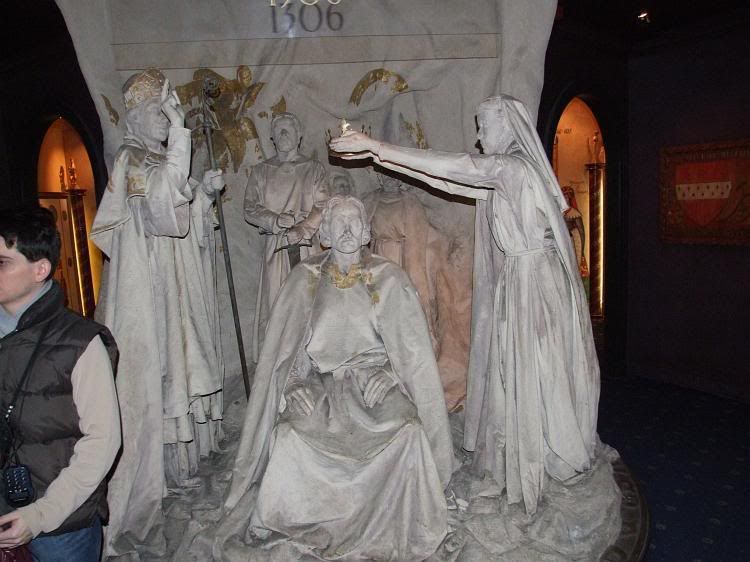
Castle scene with the New Town in the background.
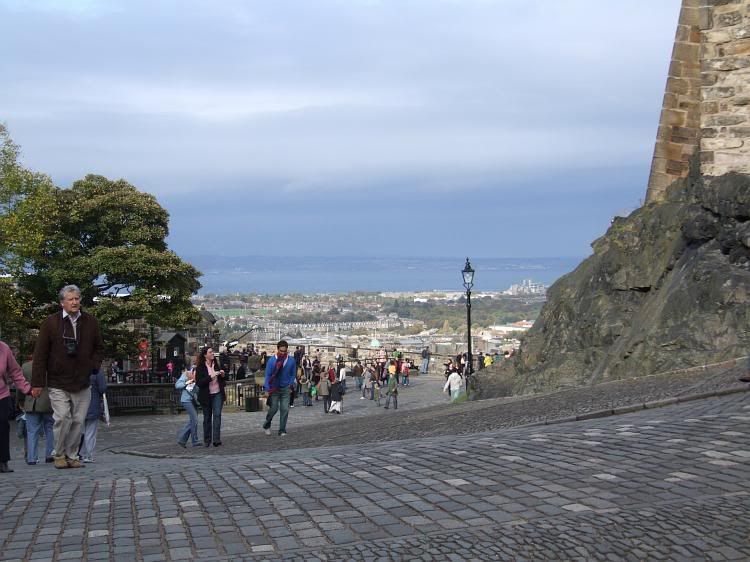
And another scene - just shows what good views are available.
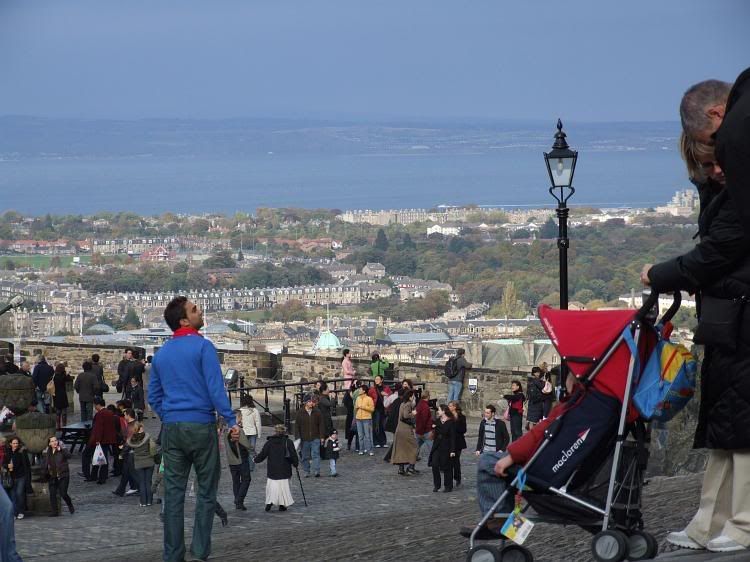
Closer to the exit. We went into the tea rooms just to the left for refreshments.
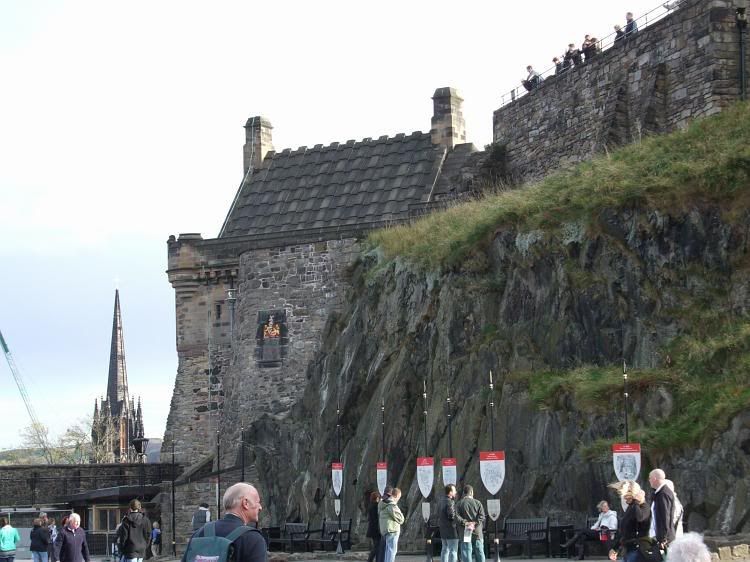
This view was taken from the tearooms - the One O' Clock gun now silent and deserted. By the way - they give 10% discount to Friends of Historic Scotland cardholders!
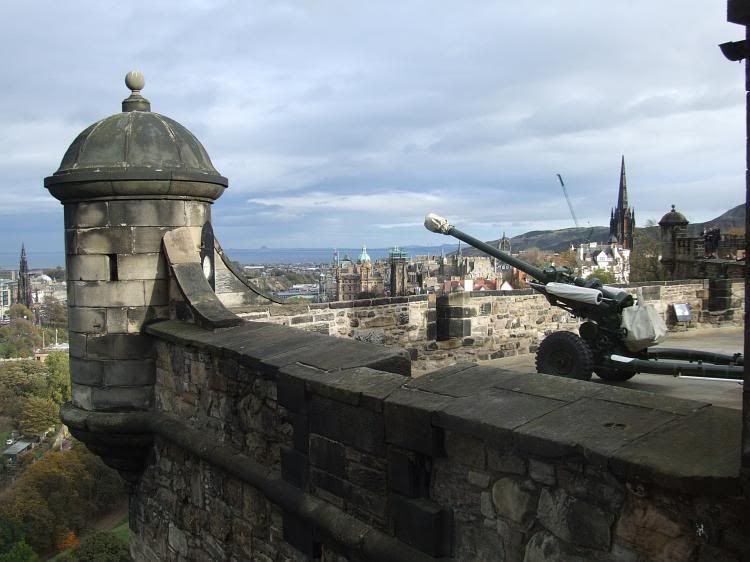
And a closer view showing how that small cupola tower brings in the background view of Princes St and the Scott Monument.
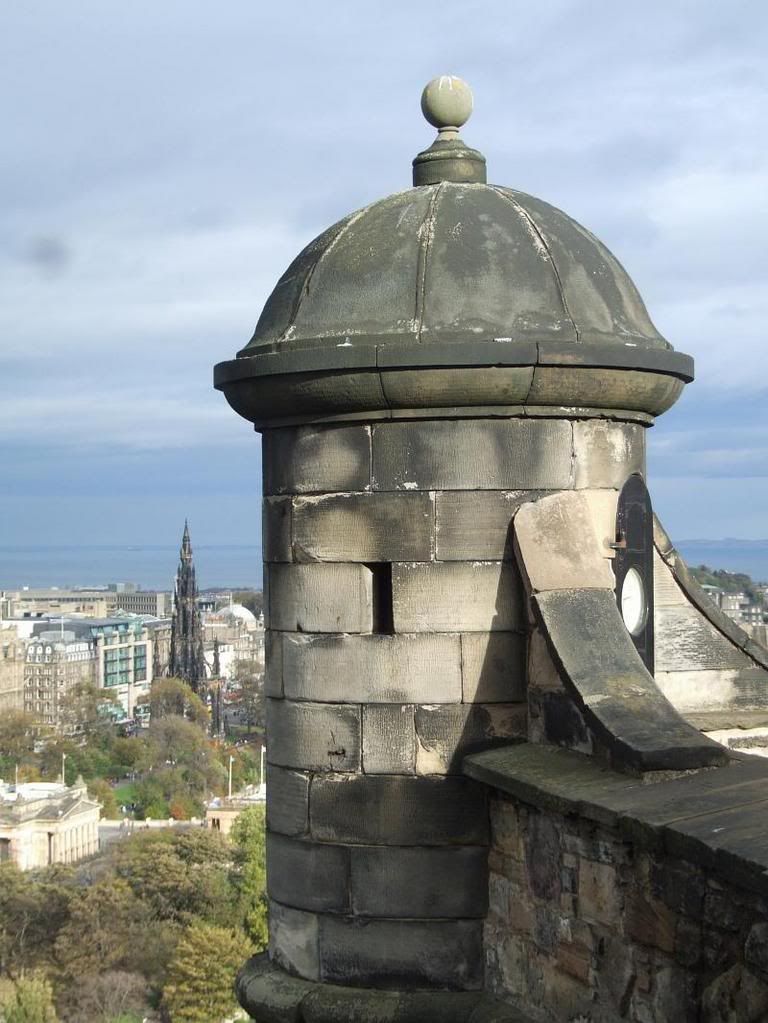
More to come! 
[B][COLOR="Red"][SIZE="1"]Reverend Earl Trefor the Sublunary of Kesslington under Ox, Venerable Lord Trefor the Unhyphenated of Much Bottom, Sir Trefor the Corpulent of Leighton in the Bucket, Viscount Mcclef the Portable of Kirkby Overblow.
Cymru, Yr Alban, Iwerddon, Cernyw, Ynys Manau a Lydaw am byth! Yng Nghiltiau Ynghyd!
(Wales, Scotland, Ireland, Cornwall, Isle of Man and Brittany forever - united in the Kilts!)[/SIZE][/COLOR][/B]
-
Similar Threads
-
By McClef in forum Show us your pics
Replies: 6
Last Post: 7th April 07, 08:06 AM
-
By McClef in forum Show us your pics
Replies: 4
Last Post: 16th March 07, 05:44 PM
-
By McClef in forum Show us your pics
Replies: 8
Last Post: 13th March 07, 06:28 PM
-
By McClef in forum Show us your pics
Replies: 1
Last Post: 7th March 07, 01:00 PM
-
By McClef in forum Show us your pics
Replies: 11
Last Post: 5th March 07, 04:36 PM
 Posting Permissions
Posting Permissions
- You may not post new threads
- You may not post replies
- You may not post attachments
- You may not edit your posts
-
Forum Rules
|
|



























Bookmarks